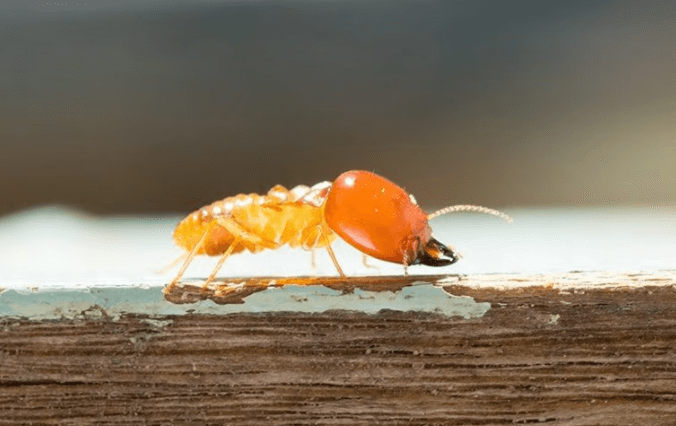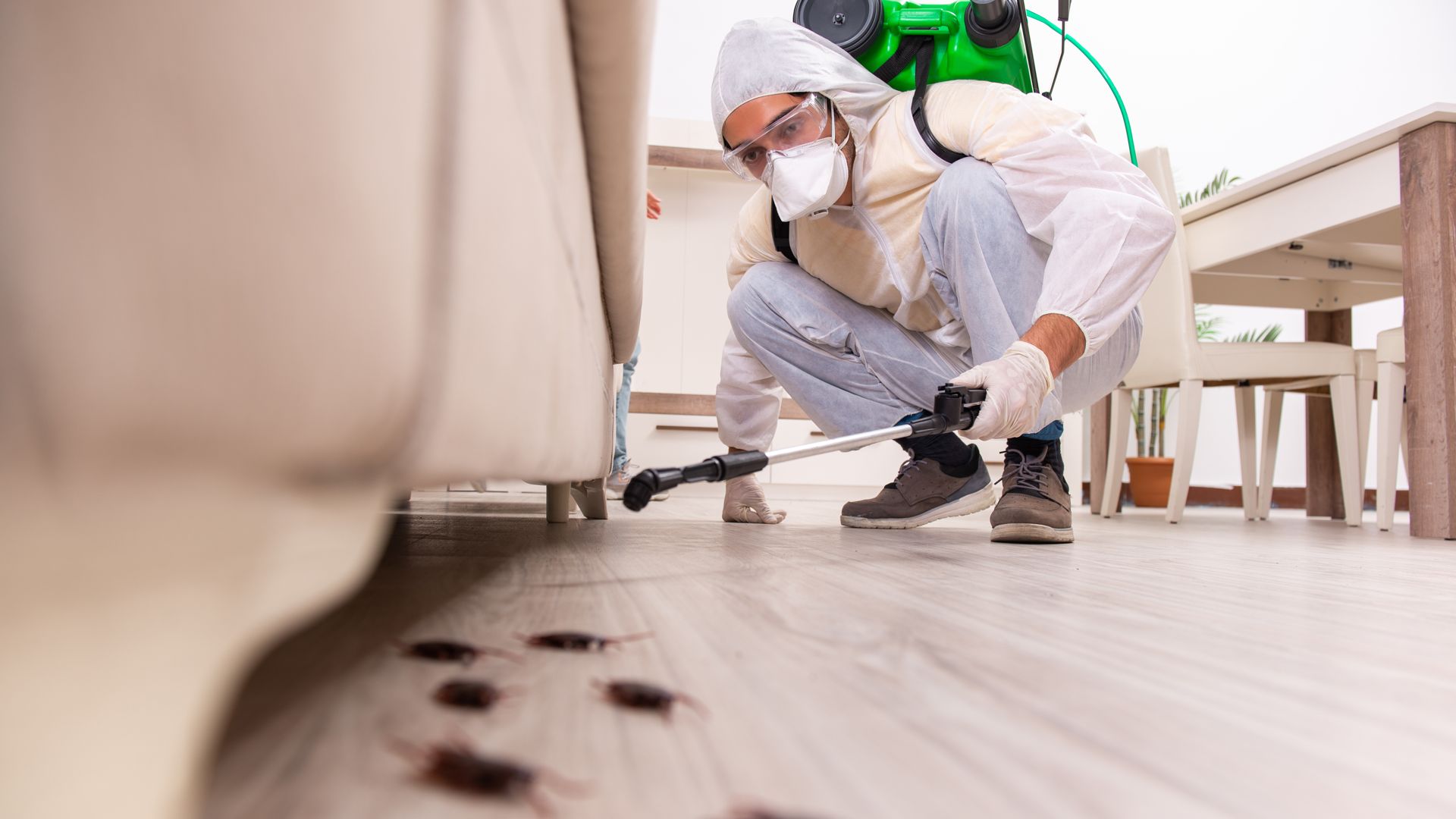
Getting Rid Of A Termite Infestation On Your San Mateo Property

Most of us enjoy the feeling of relief and relaxation after spending the morning cleaning the house, folding and storing clothes, and cleaning dishes. When you have a garden, you understand the need to pull weeds, to keep the plants healthy and producing. After procrastinating for several days, you finally get on your hands and knees and pull the weeds, and when you finish, there is a sense of satisfaction and a job well done.
We don't enjoy feeling overwhelmed by anything, be it piles of clothes, dishes, projects at work, weeds in the garden, or termites underneath our feet. When something feels out of control, we take action to control and regain a sense of order, but when we have practically invisible insects eating wood structures in our home, we feel powerless and fearful. A termite infestation is a cause for concern due to the destruction they can wreak on the house you sacrificed to purchase.
To stop termites from destroying your home, get the San Mateo pest control team from Pacific Pest Management to win the war against termites. For almost two decades, we have removed termites from homes bringing peace of mind to homeowners.
Our highly-trained service professionals implement the latest technology (including a robot) and tools to remove destructive pests from houses in the San Mateo area. The following information will help you understand termites and what you can do to defeat them.
Two types of termites infest homes in the San Mateo area, subterranean termites and drywood termites. Both termite species work inside wood but differ in the timber they infest. Moist, fungus-infested wood in tree stumps, buried lumber, water-soaked landscaping timber, fence posts, and wood in damp crawl spaces attract subterranean termites. This termite species is so-named because they live in the soil and move back and forth from the dirt to nearby infested wood. Soil provides subterranean termites with high moisture and shields them from the sun's dehydrating effects. Subterranean termites have creamy-white to dark brown 1/8 inch long, narrow bodies with six legs and a pair of antennae.
Drywood termites do not need moisture from the soil to survive but get their moisture requirements directly from the wood. Because these termites do not require dirt, they live away from the ground in attics, wood furniture, door and window frames, and roof materials. Sometimes drywood termites are located near water heaters and leaking pipes in the house. Drywood termites may also be creamy-white but do not tend to be as dark as subterranean termites. Compared to subterranean termites, they have much larger bodies ranging from 3/8 to 1 inch long. As with all insects, drywood termites have three pairs of legs, two antennae, and a segmented body.
Now that you know the description of these two termite species, let's look at the signs of an infestation in your San Mateo home:
Swarms: Within a few years of establishing a new colony, the queen produces reproductive termites. Many in this termite class possess wings enabling them to fly from the nest; their sole purpose is creating new homes. In the spring, usually after heavy rain, pairs of male and female winged termites fly from the nest on air currents to find potential nesting locations. You may have a termite infestation when you see swarms of flying insects in the spring around outdoor lights or the windows in the early morning or evening.
- Wings: When the swarming termites find a suitable location, they land, discard their wings, and establish a shelter. Wings in window sills or spider webs may indicate termites are in the house.
- Tubes: Subterranean termites cannot withstand heat or sunlight, so they construct mud tubes using their saliva, fecal matter, and dirt to protect them as they move from the ground to the moist wood. These 1/4 to 1-inch pipes are on the side of the foundation, crawlspace, or basement.
- Blisters: Drywood termites leave a thin layer of wood between them and the outside world. When moisture saturates the veneer, it buckles and causes the paint and wallpaper to appear blistered.
- Warping: Both termites species may infest door and window frames and cause them to contort; as a result, the doors and windows drag when closing or will not seal.
- Crackling: Drywood termites eat against the grain, but subterranean termites eat along the grain. In both cases, when the wood produces a crackling noise under pressure, it is a sign of termites.
- Flaking: Wood that crumbles when prodded with a tool or indents when pressed is a sign of termites.
- Discoloration: Lumber with unusual dark spots indicates a termite problem.
- Frass: Drywood termites push their feces (called frass), which resembles sawdust, outside the wood. Piles of fine wood shavings near pinholes in the wood are signs of drywood termites.
- Sound: Termites eat wood from the inside outward, so if wood sounds hollow when tapped, the core is missing due to termites.
- Pinholes: Multiple tiny holes in wood and drywall indicate the presence of termites. If the holes are in picture frames, furniture, interior wood, or timber in the attic, you probably have drywood termites. Holes in wet wood are likely from subterranean termites.
When you see all or some of these signs, you need a termite inspection by a certified, trained service professional from Pacific Pest Management.
The Extent Of Damage Termites Can Cause To Your Property
Collectively, termites cost homeowners over $5 billion in damages each year. Unfortunately, homeowner insurance policies do not cover termite damage saddling the costs of replacement and repair on the property owner. By the time you notice signs of termite damage, you are already looking at $3,000 to repair the damage you see.
Subterranean termites are the most destructive of the two types of termites in San Mateo homes. This termite group damages structures faster due to their nest size. A mature drywood colony has about 2,500 workers, but a nest of subterranean termites consists of 60,000 to one million workers chewing wood. When you consider that a small, mature colony of 60,000 workers can consume five grams of wood daily or 2 1/3 feet of a 2 x 4-foot board yearly, it is only a matter of time before you begin to experience sagging floors or collapsing structures.
Formosan termites, which are a species of subterranean termites, are the most destructive. A mature colony of Formosan termites has 350,000 to millions of workers that aggressively eat wood using their sharp, sawtooth-like mandibles. Due to colony size and aggressive behavior, a mature nest consumes one ounce of wood daily or one foot of a 2 x 4-foot board every 25 days. A house with a mature colony of Formosan termites may experience significant structural damage in six months.
Drywood termites do not destroy on a massive scale as quickly as subterranean termites, but they can still damage your home or items within the house. These termites are likely to cause warping window and door frames, collapsing wood patio furniture, and porch post failures. Because they tend to work in attics, they can eventually cause sagging ceilings as they weaken trusses and support beams.
Avoid costly repair costs and secure the services of the best termite company near you, Pacific Pest Management. We will thoroughly inspect your house, and if termites are present, we will find them.
All The Factors That Attract Termites To Your Property
Moist, often fungus-ridden wood attracts subterranean termites, while drywood termites tend to invade your home if they swarm onto the property and find entry points. Termite prevention in San Mateo begins with the following:
- Remove dead, water-soaked, and buried wood from the property.
- Provide proper drainage to ditches, downspouts, and low-lying areas.
- Dehumidify the crawl space, basement, and attic by installing additional vents or a dehumidifier.
- Replace rotting fence posts and landscaping timber.
- Treat posts and landscaping wood with a sealant.
- Create a barrier between any timber and the soil.
- Seal cracks in the foundation and roofline to prevent swarmers from entering the house.
- Prune trees and shrubs to allow maximum sunlight and airflow.
Maintaining a dry clean property and sealing entry points into the house will discourage swarming termites from entering or creating nests. Pacific Pest Management is the termite service near your home thatwill help you identify other attractions to prevent future infestations.
Contact The Pros At The First Sign Of Termites On Your Property
When you contact the quality customer service team at Pacific Pest Management, we will listen to your concerns and note what you are experiencing. Upon inspection, our service professional will look for signs of termites inside your house, including the crawl space, attic, and basement, to determine the species, extent of the infestation, nesting locations, and hot spots.
Our service professional will craft a custom strategic plan to eliminate the termites and future offspring using the best treatment options (liquid, foam, bait stations, fumigation, or a combination) best suited for the termite species invading your home. Contact us today to learn more about treatment options and to get a free estimate.

Our Reviews
Hear From Your Friends & Neighbors
At Pacific Pest Management, your satisfaction is our priority! See for yourself what our customers have to say about working with us.
-
"Customer for life"
Fantastic service! And Fast service! Customer for life and VERY reasonable rates.
Joyce W. -
"A+ service"
I needed a pest inspection. I made one call and everything else was seamless. Can't imagine anyone does it better!
Jesse B.


